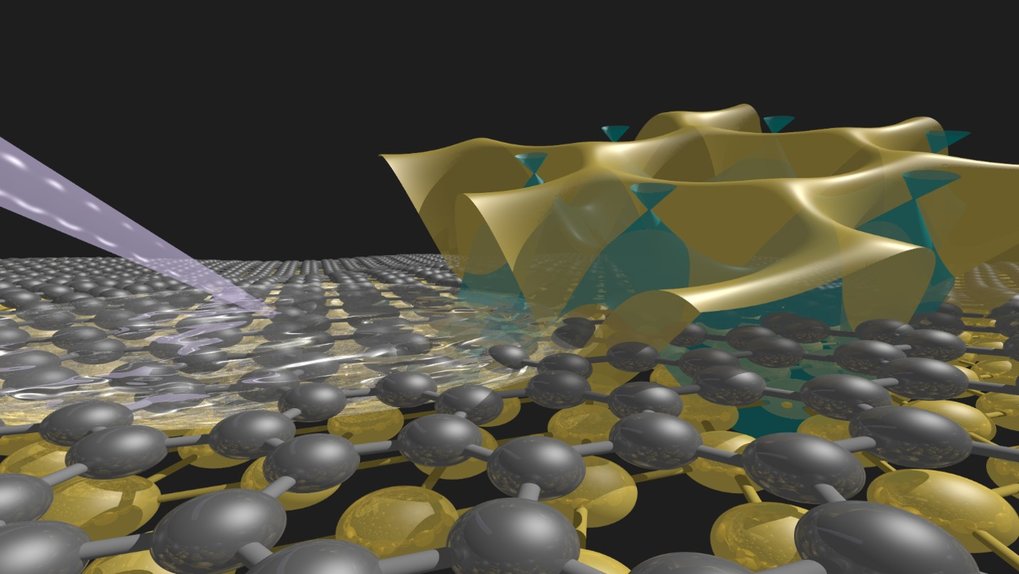
Transport phenomena in normal metals and strongly correlated systems
![Main areas of research ● The experimental study of the spin Hall effect and the spin Nernst one in the normal metals. ● Transport and magnetotransport in the conducting compounds with strong electron correlations. Equipment ● Null–picovoltmeter for precise electric measurements of kinetic, thermodynamic, and magnetic properties of conducting systems at low temperatures, with an accuracy of potential difference registration to 10-12 V (level of macroscopic manifestation of quantum effects). Device operating is based on the principle of periodic commutation of a superconductor state by self–consistent thermal and magnetic fields created by a linear conductor with current of special form [Prib. Tekhn. Eksp., 1, 202 (1985); Instruments & Experimental Techniques 59, 565 (2016)]. ● Cryostat with pumping system and pressure stabilization (P ≈ 10–3 mm Hg) of low temperature fluids within temperature range from 1.4 to 300 K. ● High–stabilized dc current supply (I/I ≈10-6 - 10-4). ● Magnetic field supply (superconducting solenoids and Kapitsa magnet) for fields up to 4 T. Important results in recent years • The spin contributions to the Hall and Nernst effects in metals with different strengths of spin-orbit interaction and different band structure (aluminum, platinum, tungsten) have been studied. The nonlinear behavior of the transverse chiral voltage in uncompensated aluminum in a magnetic field can be considered the first direct observation of the internal (band) spin Hall effect [1, 5]. • The transport properties of lanthanum and erbium cobaltites were carries out. The results of those investigations and the researches of other authors were summarized in the review, in which the basic physical mechanisms that determine the transport properties of perovskitelike materials are considered. It is given main experimental results for lanthanum and erbium cobaltites, and it is considered the influence of the polycrystallinity factor of the samples on their galvanomagnetic properties [2]. • For the first time, it was shown the possibility of the alternating current using to create a spin-hall detector [3, 5]. • It was found a difference in the behavior of the spin Hall effect and the spin Nernst effect in tungsten and platinum, associated with the band difference in the impulse dynamics of the opposite signs carriers, which determines the form of the accumulated profile of a spin magnetization at the edges of the sample [4, 5]. • It is shown that the manifestation of edge transverse spin magnetization, which is due to the spin Hall effect, is related to the period of spin precession and the duration of its relaxation [6].](images/u60762-59.png?crc=4120713622)
Important publications of the group (2019 – 2024 years)
1. Yu.N. Chiang, M.O. Dzyuba, Non-equilibrium Spin-Hall effect in irregularly shaped aluminum and tungsten samples // Physica B: Condensed Matter 558, 44-48 (2019).
DOI: https://doi.org/10.1016/j.physb.2019.01.025
2. Chiang Yu. N., M. O. Dzyuba, Electrical transport in the lanthanum and erbium cobaltites (Review Article) // Low Temperature Physics 46, 559 (2020).
DOI: https://doi.org/10.1063/10.0001234
3. Yu. N. Chiang, M. O. Dzyuba, Nonequilibrium Spin-Hall Detector with Alternating Current // American Journal of Modern Physics 9(1), 7-10 (2020).
DOI: doi:10.11648/j.ajmp.20200901.12
4. Yu. N. Chiang (Tszyan), M. O. Dzyuba, Spin component in the Nernst–Ettingshausen effect in metals with different band structure // Low Temperature Physics 48, 142 (2022).
DOI: https://doi.org/10.1063/10.0009294
5. Yu. N. Chiang (Tszyan), M. O. Dzyuba, Transverse spin effects in electron transport // Low Temperature Physics 49, 136 (2023).
DOI: https://doi.org/10.1063/10.0016487
6. Yu. N. Chiang (Tszyan), M. O. Dzyuba, Manifestation of Edge Spin Magnetization in Normal Metal // Low Temperature Physics 50, 888 (2024).
Contacts
47 Nauky Ave., Kharkiv, 61103, Ukraine
e-mail: terekhov@ilt.kharkov.ua
tel.: +380(99)764-2075
© 2025, Design by Anton Klimkin, Andrii TEREKHOV
Executive editor: Andrii TEREKHOV
